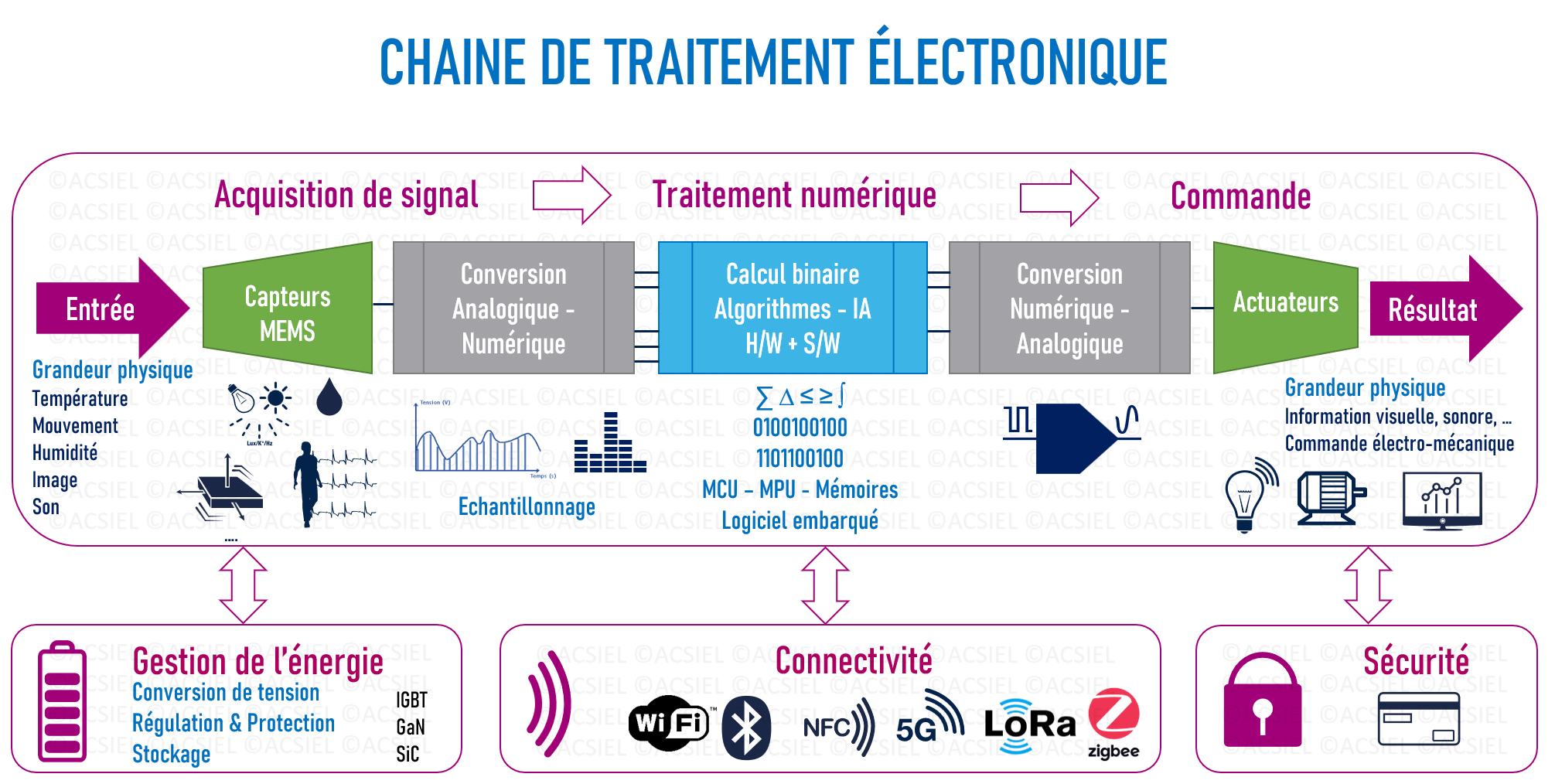Digital and lots of analog…
Any electronic processing chain can be broken down into a succession of steps and key functions, each using specific product families. The diagram below illustrates the major functional blocks generally used in an electronic system.
The Internet of Things (IoT) has finished consecrating this vision in blocks since these objects are all deemed to be equipped with connectivity to directly interfere with objects that surround them but also with more or less distant systems through the famous Cloud capable of storing data and ensuring all or part of its processing.
These objects are also very good at capturing the physical phenomena and quantities that surround them. They embed more and more sensors capable of providing the electronic system with data which will feed the calculations and algorithms processed at the heart of the system. The measurement of the analog signals delivered by these sensors must therefore be digitized through a sampling process to be interpreted by the microprocessors (MPU) or < span style=”color: #3195b7;”>microcontrollers (MCU) that perform digital operations. The embedded software, that is to say loaded into the system, is of course the key element to ensure the advanced functions of digital processing.
At the end of digital processing, the results are then returned to the outside world by converting them into analog signals capable of supplying actuators intended for fulfill the expected function of controlling the electronic system (motor controls, display, etc.)
Often running on batteries, connected objects require optimal energy management to give them sufficient autonomy. This management is of course carried out by the performance of the power components used to power the system, but also by the sobriety of all the other components. The best compromise between speed – weight and size – consumption – cost is to be established based on application constraints.
Finally, the robustness of the system is essential to ensure its security and that of the systems with which it interferes and thwart all virus attacks and data theft.
The proper functioning of this principle diagram is also guaranteed by the presence of numerous discrete semiconductor components (diodes, transistors) or integrated passive components and connectors to ensure multiple functions (interconnection, filtering, protection, etc.).
We see, therefore, that electronic is not only synonymous with digital but also with analogue , these two worlds being intrinsically linked to build a complete and robust system.


